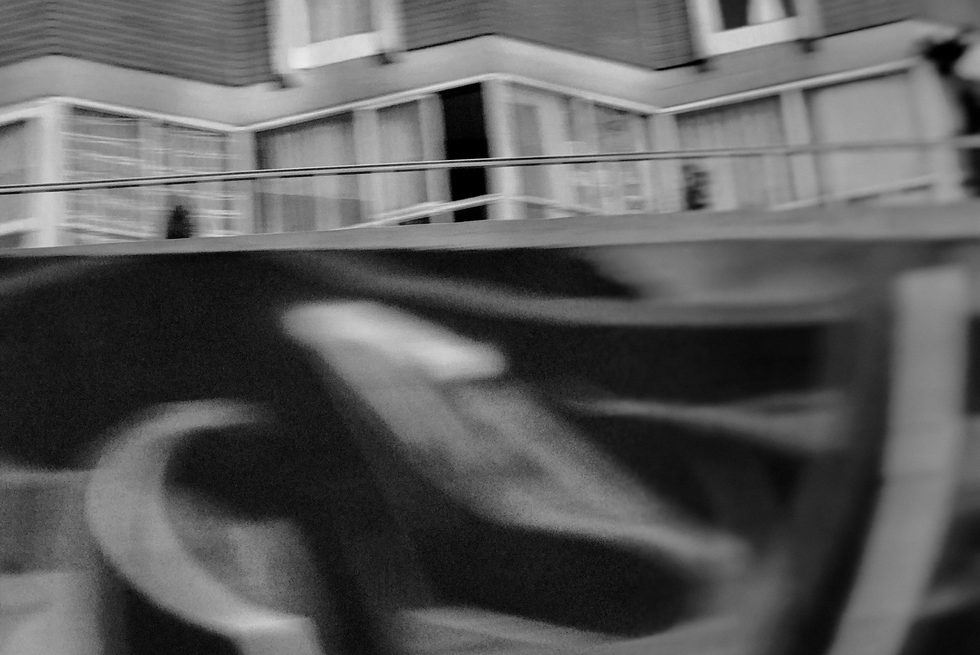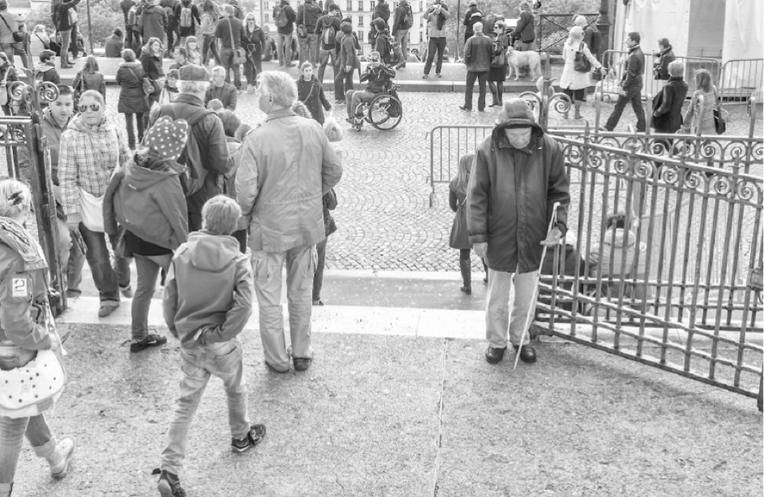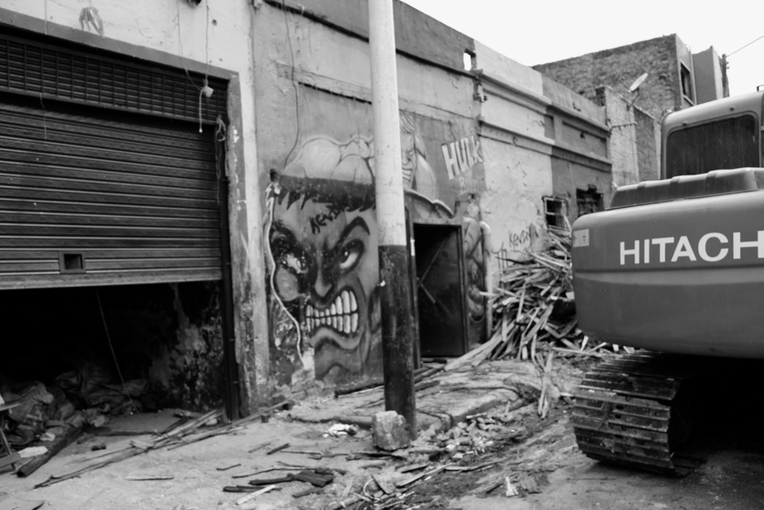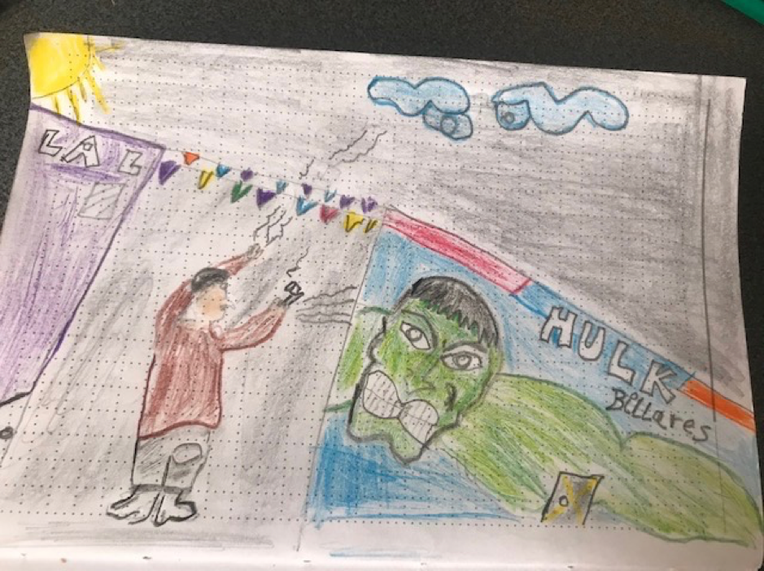The Spiraling Image
From the Series: Book Forum: The Blind Man
From the Series: Book Forum: The Blind Man

The value of an image is measured by the extent of its imaginary aura.
—Gaston Bachelard
Through diary-like inscriptions and photographs, mostly of his distant encounters with a man who appears to be blind, The Blind Man charts Robert Desjarlais’s personal experience and lived phantasms. We learn quite viscerally that images are limit-experiences—they point us toward horizons that exceed us, to the “impossibility of living,” and show how easily one could get “swooned” into imagistic paths that destabilize our sense of self: they tear us from oneself. The book is thus a phantasmography, a way to attend to and to take seriously a phantasm’s form and force. Images and phantasms are not to be taken lightly.
Desjarlais dwells in the photographs he captures. They become a way to reenter scenes once lived—a task that can become more haunting than rewarding. He compares images taken a few seconds away from one another, charting who enters the frame, who exits, who gets swallowed up in the depths of the image. Photography can become a way to slow down anthropology itself, to suspend the tendency for quick analytic closure on the plane of “high theory” where images are often discarded after semiotic extraction. Here, a stubborn return to the image becomes a way for multiple explanations to be posited, a way to carve out the possibility for multiple speculations and temporalities to reside within each instant.

Take, for example, the image of the blind man standing against a gate on the steps of the basilica. His body anchored in place, not only spatially segregated from the tourists and “outside the frame of their lives,” but perhaps also belonging to a different experience of time, he defies the invisible lines of fast-paced movement by which the tourists seem to be guided. The author points us toward the man in the wheelchair, his camera snapping back at us, as we are left to wonder where his snapshots will end up. So much is condensed in the image; so many possibilities stored in its depths and surfaces; so many temporalities. The instant, here, cannot be considered as a moment in isolation, but rather as the crystallization of time itself, its multiple tenses copresent and bundled into the image upon encounter.
In the book, a series of seemingly banal happenings end up constituting a meaningful personal experience that unfolds through peculiar tempos and intensities. We notice them most when they oscillate—when patterns strike and gain momentum, or when intensities fade into the ether of nonevents. The Blind Man tracks these trivialities that teeter on the potential for catastrophe. As Desjarlais contemplates whether the blind man can actually see or not, and what must have happened to his damaged eye, things start happening to him: patterns accrue. Reading glasses start to break; the organism seems to turn against itself as eyes are assaulted while asleep, and a corneal abrasion morphs into the abrasion of selfhood. Desjarlais writes: “There seems to be a process of phenomenological assimilation at work; I am left to wonder, vaguely, if I am coming to approximate the lifeworld I wish to comprehend. Am I falling into a destructive mimesis of blindness?”

I recognize these sorts of preoccupations throughout the oscillating swings of fieldwork. I felt unseen forces running rampant, somehow inheriting the somatic troubles (anxiety, dis-ease, the nausea and paranoia of being close to violence) of my interlocutors in Bogotá. Any insights that my own phantasms provided were hard-won. My interlocutors had their own phantasmographic techniques for tracking momentums and tempos. Some discerned meaning from the moving silhouette of cigarette smoke, which could notify them of violence awaiting them. Others divined the day’s existential forecast from the shapes and colors of clouds, or the light cast on Hulk’s sacred graffiti. They looked into his world, and he looked back.

“Scanning for signs” (Stewart 1996, 8) becomes part and parcel of reckoning with existential aporias, a kind of daily horoscope for where we feel life is going. A phantasmography helps us to remain vigilant to such ghostly intensities. The world seems to speak to us in its own eccentric ways. It can sound paranoiac, but I like to think of it as remaining watchful, as something that comes with the territory of inhabiting the subjunctive mood in real life. The fantastical is palpably felt through its atmospheric force; it can dictate tempo, rhythm, mood, and even our bodily disposition. It lurks, hovers, and becomes part of us too. Desjarlais writes: “Take care: in playing with phantoms, one becomes a phantom.” We have been warned.
Stewart, Kathleen. 1996. A Space on the Side of the Road: Cultural Poetics in an “Other” America. Princeton, N.J.: Princeton University Press.